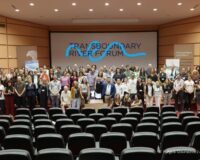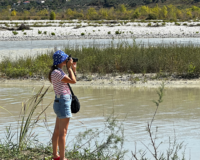A technical report by a network of non-profit organizations in Central and Eastern Europe accuses international development banks and European Union institutions of financing projects in Albania that endanger the country’s natural monuments and national parks.
The investigative report was drawn up by the BankWatch network and mentions the HPP of Langarica and that of Tërnova as blatant examples of how donor money is financing constructions that threaten protected areas.
The report investigates the financing of hydropower plants in all the countries of South-Eastern Europe, but among the most typical cases of abuse it refers to Albania.
“In April 2015, the EP asked Albania to cancel the construction of HPPs in protected areas. Although it did not mention names, the resolution mainly referred to Langarica and 40 other HPPs on the Vjosa River. Ironically, this project is financed by the IFC of the World Bank and the public institutions of the EU themselves”, says the report.
The report describes Langarica as a symptomatic case of the wind of former Prime Minister Berisha, whose administration issued hundreds of hydropower permits.
Initially, the concession was given to “Hasi Energji”, an unknown company dealing in food trading. But four months later the government declared the area a national park. In 2011, “Hasi” sold the concession to an Austrian company named “Enso Energy”.
The national park declaration meant that the company had to reapply for the environmental permit. Although the permit was initially denied, only three months later the government approved it.
“Since then, this project has received 6 million euros in financing from the IFC, 5 million euros in loans from the Austrian Development Bank and 9.1 million euros in loans and grants from the Green Growth Fund, which is owned by the EBRD, the European Investment Bank, KFË, etc”, the report underlines.
But Langarica is not the only case. The report also draws attention to the Ternova HPP, which diverts the waters that the residents of the area used for irrigation.
“In 2012, the EBRD approved 6 million euros of funds for the Ternova HPP. Before the start of the works, the project was not consulted with the residents of the area, despite the fact that it harmed their economy. This action is contrary to the social and environmental requirements of the EBRD”, the report adds.
In total, the document notes that in Albania there are over 94 hydropower plants planned within protected areas.
Chronicle from Top Channel
Here you can find the full study carried out by RiverWatch and EuroNatur with the assistance of BankWatch.







